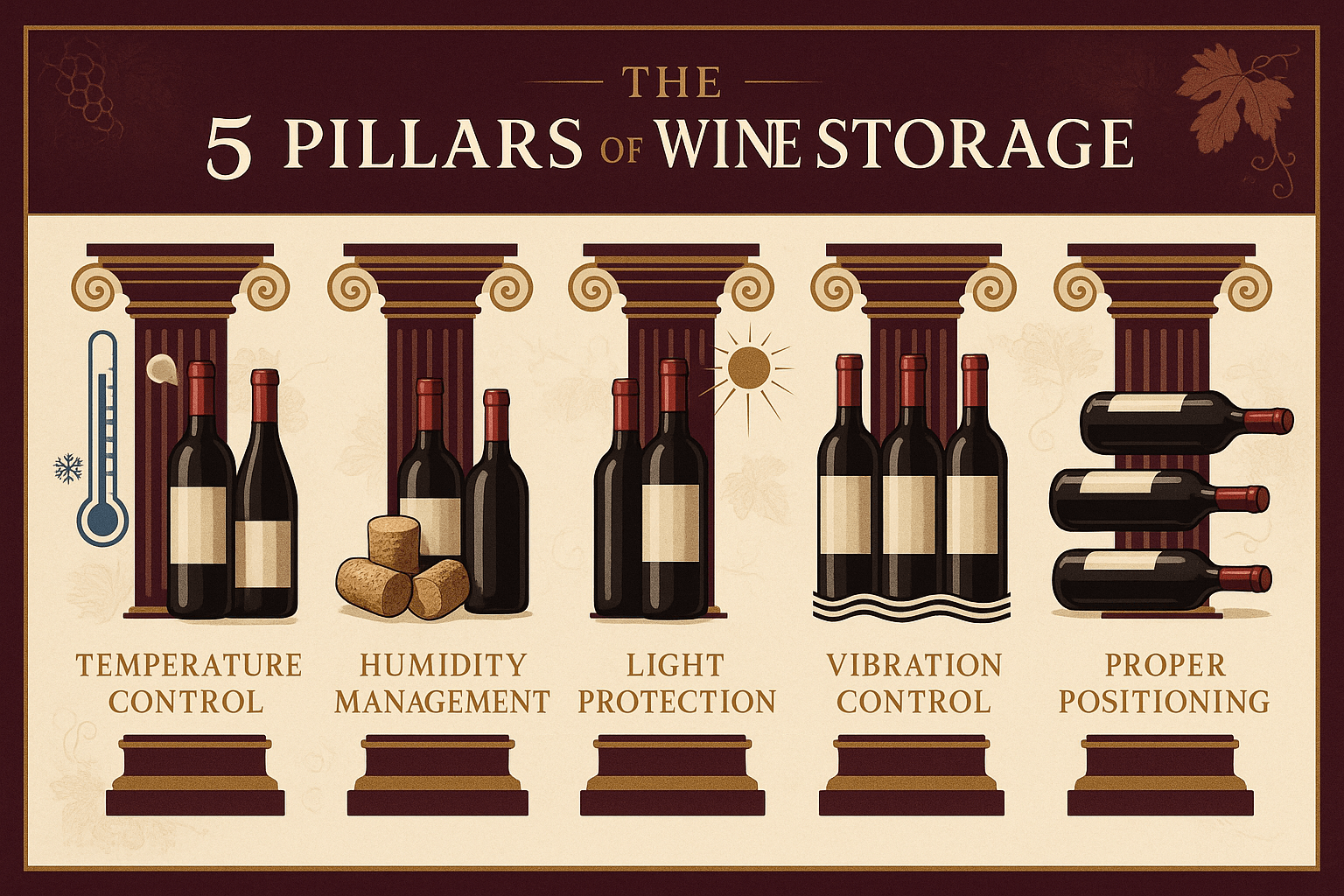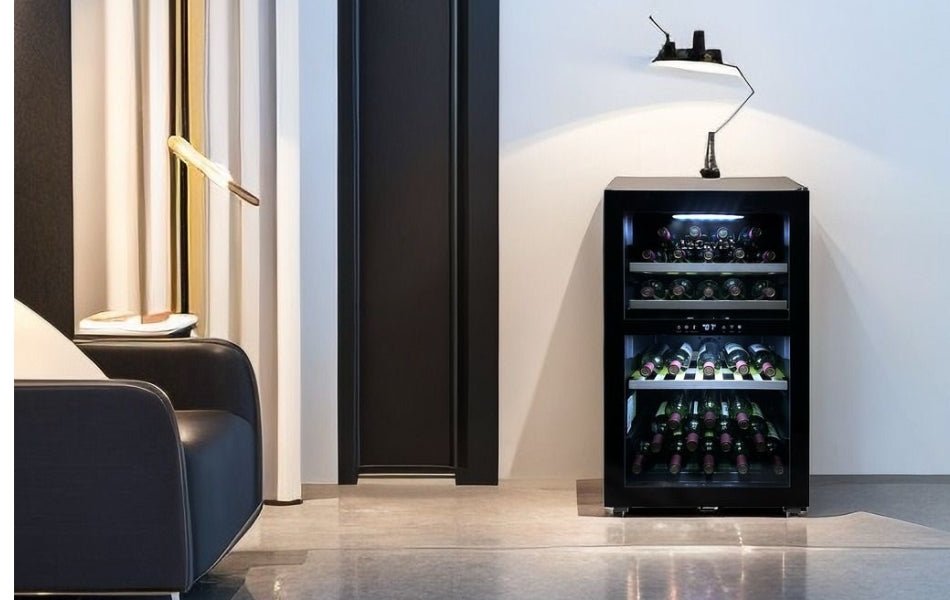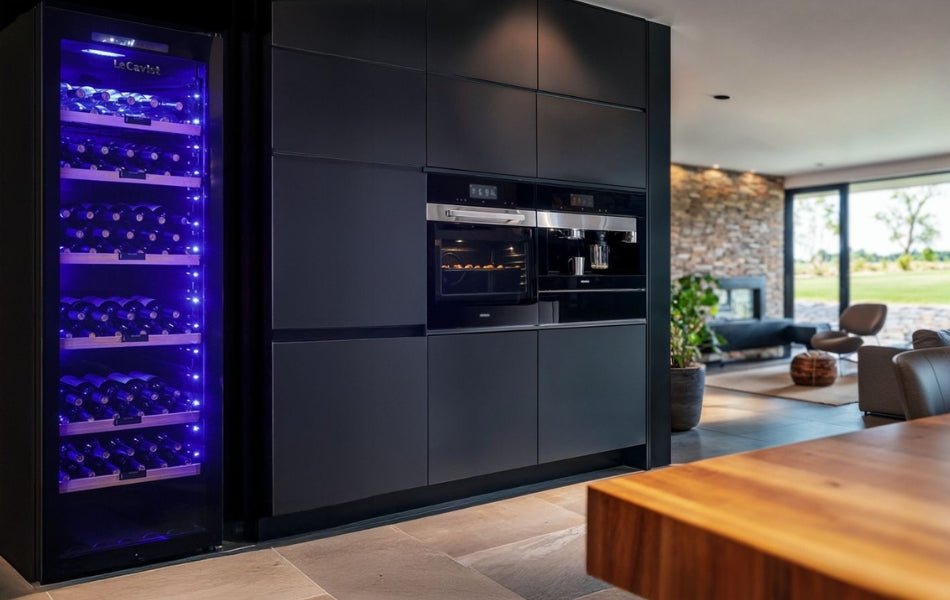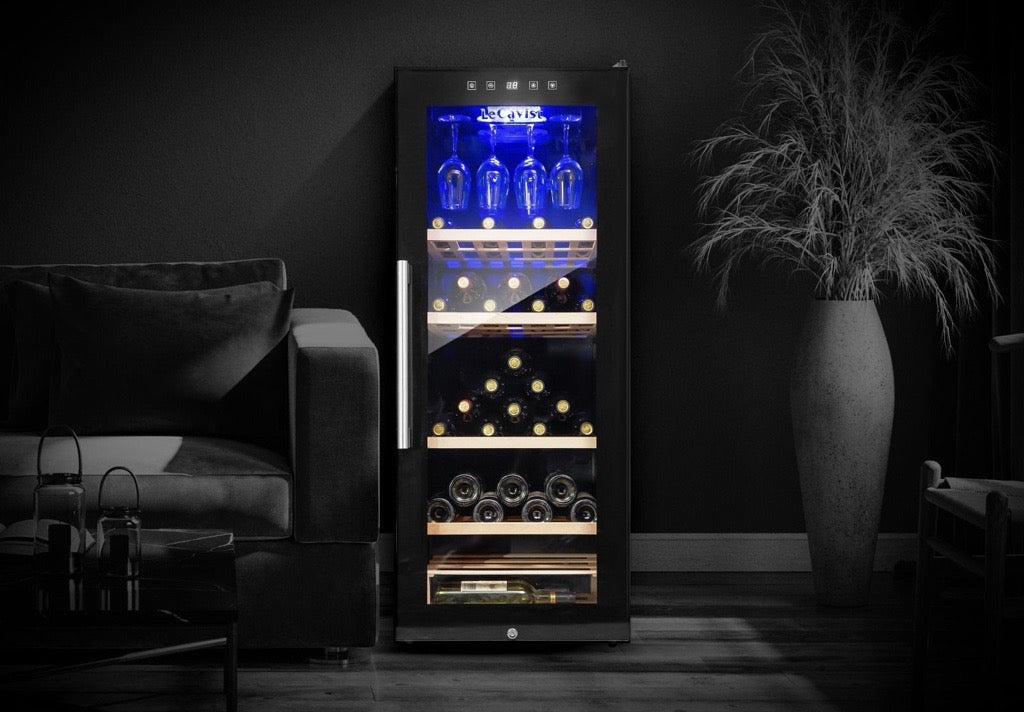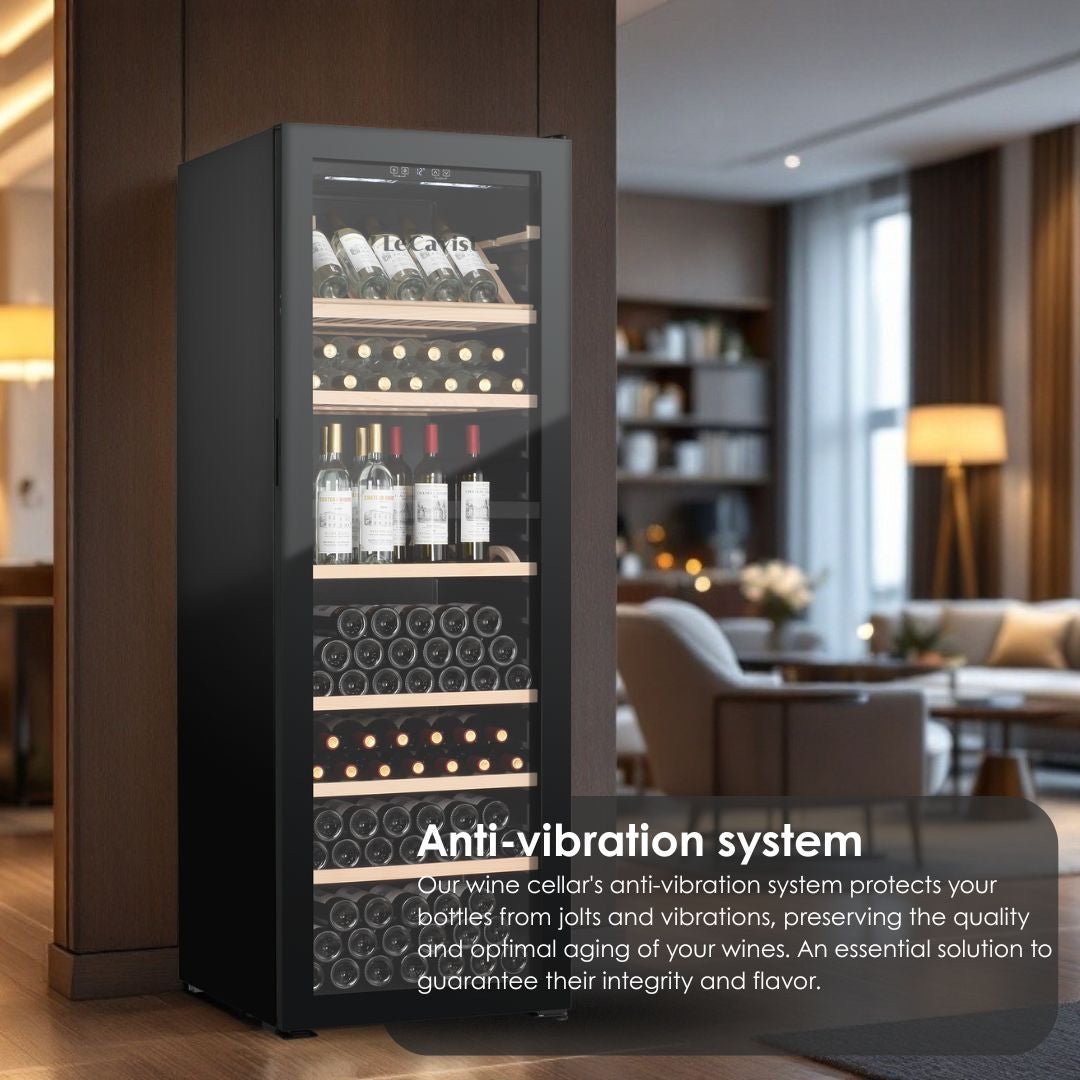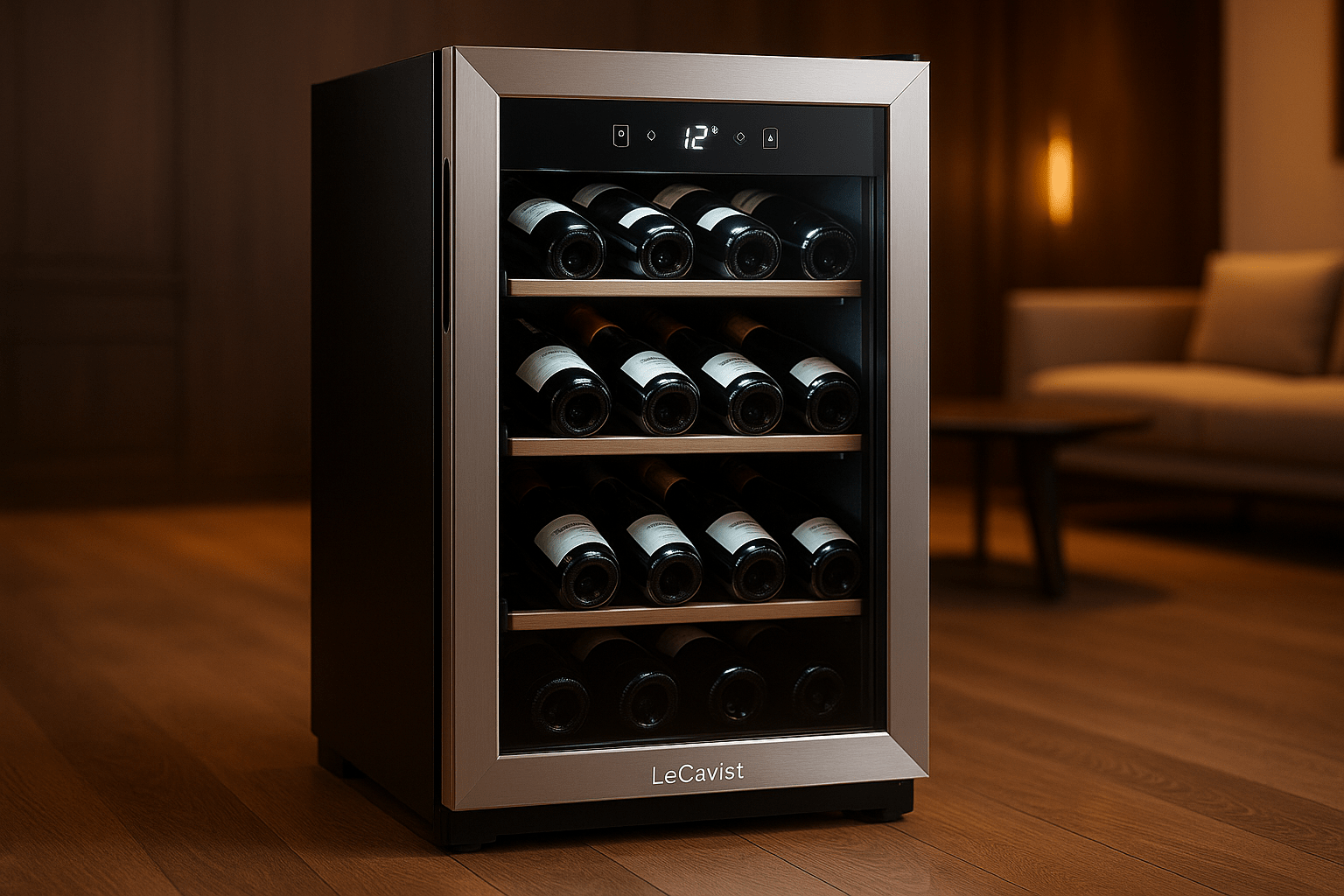
How Thermoelectric Wine Cabinet Works: A Smart Choice for Wine Enthusiasts
Wine storage is not storing bottles on a shelf, but guaranteeing the taste, texture, and ageing potential of every drop. And that's why wine connoisseurs in Australia are turning to the thermoelectric wine cabinet—a high-tech, sophisticated wine storage solution that combines silent operation, energy efficiency, and cutting-edge design.
If you are in the market for upgrading wine storage or choosing an integrated wine fridge for the kitchen, educating yourself on how thermoelectric cooling works will allow you to make a better choice.
What is a Thermoelectric Wine Cabinet?
A thermoelectric wine cooler does not use compressors or refrigerants to cool the interior down, but rather uses a Peltier effect solid-state heat pump. The process actually transfers the inside heat outwards through the application of electricity, with no moving parts.
These have two major advantages: silence and tranquility. Wine is a delicate drink. Vibrations will disturb sediments and, in the long run, damage the aroma and flavor profile. Thermoelectric systems negate that danger in absolute terms with a vibration-free, constantly static environment—a perfect environment for storing your collection.
Why Thermoelectric Wins for Australian Houses
The Australian climate is very unpredictable, but in most urban regions such as Melbourne, Sydney, Brisbane, and Perth, indoor conditions are fairly consistent—thanks in part to today's insulation and climate control. That makes indoor use of the thermoelectric wine cabinets ideal.
These are most effective in rooms that are held in the 18–24°C range. With these temperature conditions, they provide exceptional cooling performance, normally lowering the internal temperature 12–14 degrees below the ambient—a range suitable for both white and red wines.
And if you also value quiet time, then another advantage of such coolers is that they are nearly silent. So, they become a preferred choice for apartments, open-plan living, and even home, offices wherein discreetness is needed.
Compressor vs Thermoelectric: What's the Real Difference?
Most Australians wonder whether a wine fridge that is thermoelectric is better than the standard compressor model. The answer is relative to the wine you own, the location, and expectations.
Compressor fridges use a more powerful system that will cool to lower temperatures and handle higher ambient temperatures better. These are often used in commercial uses or in homes with large wine collections.
Thermoelectric fridges, on the other hand, are for small to medium collections—typically 17-168 bottle capacities. These are best for indoor, climate-stable environments. Unless you are ageing wine in a heated garage or in direct sun, the quiet, more efficient and slimmer option is the thermoelectric wine cabinet.
And then there's power consumption. Compressor-powered models are normally power guzzlers, especially if they're cycling frequently. Thermoelectric coolers are less power-intensive and are less machinery-intensive, and that often means less maintenance and in-use costs in the long term.
Aesthetic and Functional Benefit
Another contributing element in the increased popularity of the coolers is how they look. Most of them are available in matte black or stainless-steel finishes, tinted UV-proof glass doors, and wooden racks. These make them compatible with integrated wine fridge installations in home bars, lounges, and kitchens.
These aren’t merely functional—they elevate the atmosphere. LED lighting, touch-soft control panels, and two-zone capabilities for cold-storing the whites and the reds, separately, add a dash of luxury without the luxury dollar being siphoned away in energy costs.
For the space-challenged or renter, there are compact models that offer countertop models or thin, vertical models that make no compromises in performance or appearance.
The Bottom Line: Why You Must Purchase Thermoelectric
A thermoelectric wine cabinet isn't just a storage solution, but a wine-enhancing solution. These wine coolers provide you with a stylish, quiet home for your reds, your whites, and your sparkling favorites, with the added benefit of reducing energy and space expenses.
If you're in the market for a kitchen renovation or simply the sleek, high-performance means of wine preservation, then a thermoelectric unit—one that comes with an integrated wine fridge, for instance—will give you the ultimate in form and function.
These will not be suitable for all. If you have dozens of bottles in a back-shed or are experiencing extreme temperatures, a compressor version might prove better. But for most wine aficionados in Australia, the obvious, intelligent, and chic option is the thermoelectric.
FAQs
Q. Are wine coolers with thermoelectric good?
Definitely. In home use, particularly in temperature-stabilised indoor conditions, they provide good service, quiet running, and energy efficiency. They constitute the ultimate solution for wine connoisseurs, who wish to have sufficient storage but not the bulk or commotion of a compressor fridge.
Q. Compressor or thermoelectric wine fridge, which is better?
A thermoelectric cooler is the better choice for most homes in Australia—unless your home is subjected to intense heat. The compressor versions are larger, but also louder and more costly. Select according to the size of your storage, climate, and region.
Q. How good are the thermoelectric fridges?
Yes—but with a caveat. They are wonderful with wine and the like but less than ideal for short-term storage of perishable foods. Their cold storage is temperature-dependent, so for maximum use, use them in the house.
Q. How is the power of a thermoelectric wine cooler rated?
Generally 50-70 watts, model and size dependent. This is far lower than most ordinary fridges, so they use less energy and save you money in the long term.
Q. How cold does a wine cooler that is thermoelectric get?
These will normally cool to 12–14°C below the room temperature. So if the room temperature is 22°C, the internal temperature should be 8–10°C—a suitable range for white wines and sparkling wines.

